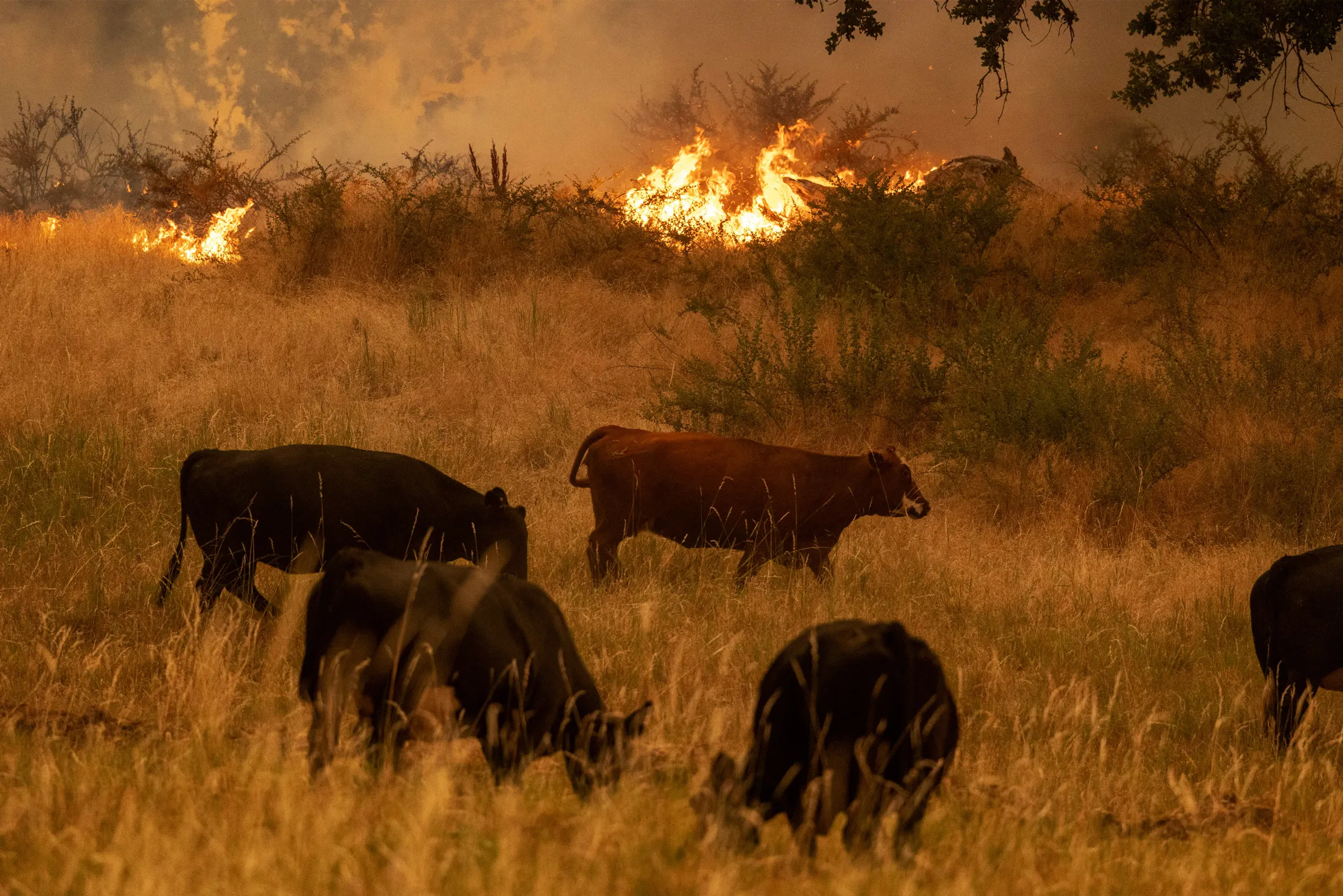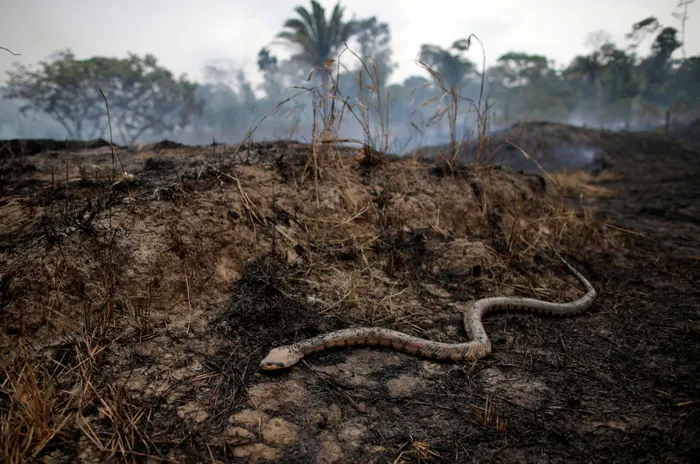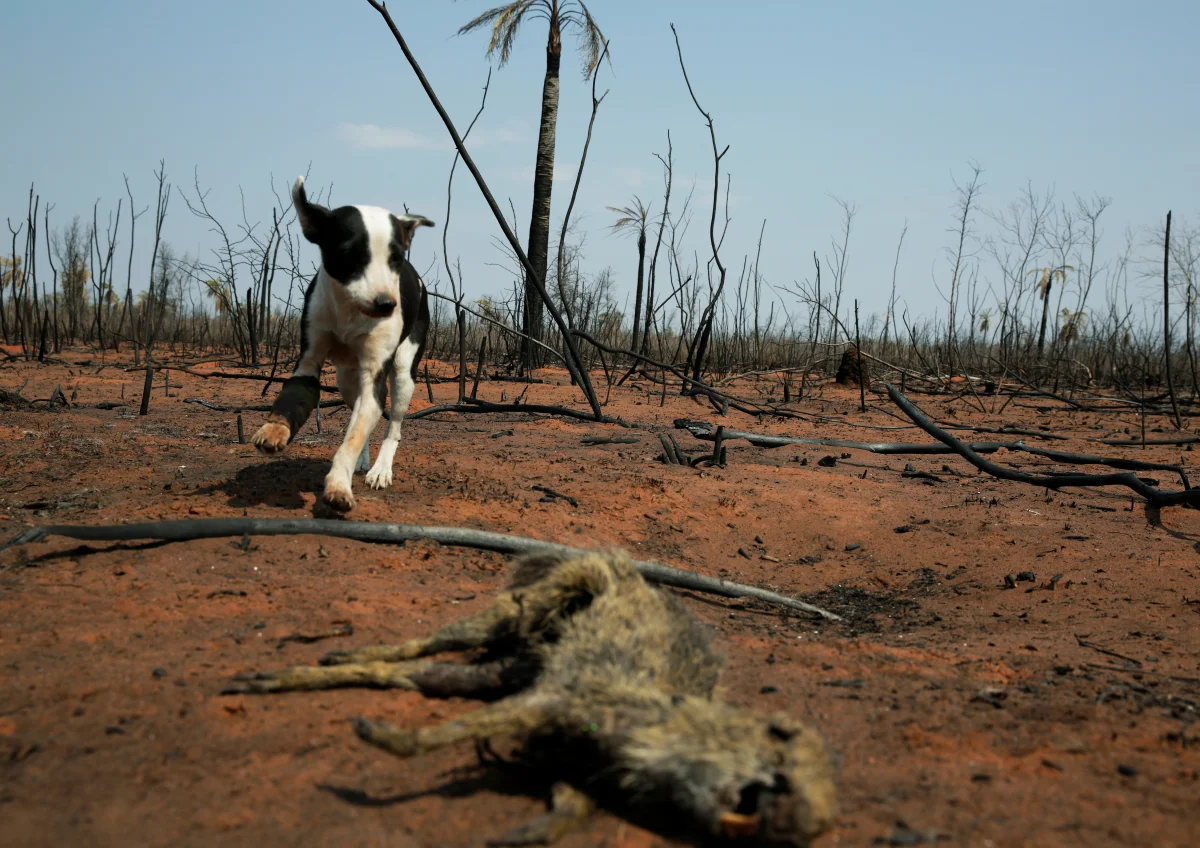- SDGs 15: Life on Land -
By: Melody Huang

According to People for the Ethical Treatment of Animals Organization, the Union of Concerned Scientists considered meat-eaters as the second-biggest environmental crisis facing the earth, since eating meat has such an impact on the environment (Meat Harms Environment). Over years of human breeding, raising, and slaughtering animals, there are plenty of damage humans made to the Earth.

This includes not only animal rights but also involves the environment.
People do not mind demolishing the forest to get the resources they need, so they cause deforestation, burn the woods, burn animals' habitats and burn the soil.

Also, according to the National Library of Medicine’s research, livestock heavily pressures the planet’s limited water, land, and energy resources (Philip K. Thornton). “Industrial meat” destroys the planet’s environment in several aspects, such as climate change, forest fires, and wildlife.

As human beings’ population increases, our demand for meat continues to rise, and this demand causes climate change. In order to provide the 70 billion animals raised annually for human consumption, there are over 150,000 deaths annually all over the world (Climate Change).
Besides the pollution produced by industrial activities, animal husbandry also has a significant impact on the greenhouse effect; livestock handles 18% of global greenhouse gas emissions, which is more than the global transport industry.

While animal husbandry provides food for humans, it also produces huge amounts of animal manure. These feces emit 400 different harmful gasses into the atmosphere, including methane, carbon dioxide, ammonia, hydrogen sulfide, etc. Especially when thousands of animals are gathering, the concentration can be considerable.
A study found that in 2014, the total amount of methane produced by the digestion of animals reached 164.3 million tons in the United States. As a result, the large number of harmful gas emissions from the livestock industries caused global warming. But this isn’t the only reason.
The industry of livestock requires a lot of land to sustain itself, so they burn the forests and destroy nature for profit. Human activities have destroyed the Amazon forest for many years. Especially in Brazil, 20% of the original forest has disappeared.

The area that was deforested in 2020, and the area cleared but not burned in 2019, totals 4,509 square kilometers (Amazon Fires Affect Health). Many of them are meat suppliers’ farms, using illegal deforestation to open up land for raising cattle and growing soybeans to expand the business that destroys nature.
The burning of enormous areas of forest will release large amounts of carbon dioxide, increasing the greenhouse effect. Deforestation between 2007 and 2016 has already caused the Amazon rainforest to release an average of over 110 million tons of carbon dioxide per year (Brazil Amazon Rainforest Wildfire), and this has led to an increase in the planet's temperature.
Data from the Brazilian Amazon Deforestation Satellite Monitoring System (PRODES) shows that 2021 will see a 21.97% increase in deforestation compared to 2020, making it the fastest year for deforestation since 2006(Monitoring Deforestation of Amazon). The economic-focused government of Bolsonaro has single-handedly caused 13,235 square kilometers of devastation in the Amazon, an area more than a third the size of Taiwan. Extreme weather events such as droughts have also increased, causing many creatures to lose their habitats and even burn to death.

By burning forests, destroying animals’ habitats, and using toxic agricultural chemicals to grow livestock food, this industry causes thousands of species extinction. The Amazon rainforest is rich in resources and high in biodiversity, and nearly 1/10 of the species on earth live here (WWF). However, 9,000 wildfires are raging in this vast tropical rainforest and even spread to Bolivia, Paraguay, and Peru. According to the World Wildlife Fund, the Amazon is home to at least 10 percent of all known species on Earth: 40,000 different plant species, 3,000 species of fish, and over 370 species of reptiles. For thousands of mammals, amphibians, reptiles, and birds living in the Amazon, the effects of the fires are divided into two phases, one immediate and one long-term. In some forests, timely wildfires due to dry weather play a very important role in maintaining a healthy ecosystem.
However, Amazon Forest is different.

Although fires occasionally occur, they are usually small in scale and are easily extinguished because of the rain. Mazeika Sullivan, a professor of environment and natural resources at Ohio State University who is currently investigating the Amazon Rainforest, said the fires would take a huge toll on wildlife in the short term (SENR). He emphasized that in wildfires, animals have two options; they may hide by excavating, entering puddles or river channels, but most of them face the destiny of displacement or even extinction. When in extreme situation, many animals are burned or choke to death, through smoke inhalation (Sullivan).
Ultimately, we should be responsible for the damage we cause to nature. The livestock industry is extending as the planet’s population continues to grow. Also, many large fast-food companies source Brazilian beef, or meat raised on Brazilian soybeans, and persist to trade with companies involved in the destruction of Brazil’s forests. While the fire broke out in the Brazilian Amazon, the industries remained silent. As a member of carnivorism, we can start by eating less meat. Together, we can save the earth from the crisis of greenhouse gases, wildfires, and biological extinction.
Works Cited
“Amazon Wildlife.” Panda.org, 2010, wwf.panda.org/discover/knowledge_hub/where_we_work/amazon/about_the_amazon/wildlife_amazon/. Accessed 20 March 2022.
“Brazil: Amazon Fires Affect Health of Thousands.” Human Rights Watch, 26 Aug. 2020, www.hrw.org/news/2020/08/26/brazil-amazon-fires-affect-health-thousands /. Accessed 20 March 2022.
Eshel, Gidon, et al. “Environmentally Optimal, Nutritionally Aware Beef Replacement Plant-Based Diets.” Environmental Science & Technology, vol. 50, no. 15, July 2016, pp. 8164–68, https://doi.org/10.1021/acs.est.6b01006/. Accessed 20 March 2022.
Greenpeace | HK, 2019, “2019Brazil Amazon Rainforest Wildfire- Fact Check - Greenpeace.” Greenpeace, www.greenpeace.org/hongkong/issues/forests/update/10009/2019%E5%B7%B4%E8%A5%BF%E4%BA%9E%E9%A6%AC%E9%81%9C%E5%A4%A7%E7%81%AB10%E5%95%8F-fact-check/. Accessed 20 March 2022.
“JBS: Brazilian Butchers Take over the World.” Theecologist.org, theecologist.org/2019/jul/02/jbs-brazilian-butchers-take-over-world/. Accessed 23 March 2022.
“Our People | SENR.” Senr.osu.edu, senr.osu.edu/our-people/ma%C5%BEeika-sullivan/. Accessed 23 March 2022.
Peta. “How Does Eating Meat Harm the Environment? | PETA.” PETA, 2015, www.peta.org/about-peta/faq/how-does-eating-meat-harm-the-environment/.Accessed 20 March 2022.
Thornton, Philip K. “Livestock production: recent trends, future prospects.” Philosophical transactions of the Royal Society of London. Series B, Biological sciences vol. 365,1554 (2010): 2853-67. doi:10.1098/rstb.2010.0134/. Accessed 20 March 2022
US EPA, OECA. “Agriculture and Air Quality | US EPA.” US EPA, 6 Aug. 2015, www.epa.gov/agriculture/agriculture-and-air-quality.
“PRODES — Coordenação-Geral de Observação Da Terra.” Www.obt.inpe.br, www.obt.inpe.br/OBT/assuntos/programas/amazonia/prodes./. Accessed 20 March 2022
“Water Management | Land & Water | Food and Agriculture Organization of the United Nations | Land & Water | Food and Agriculture Organization of the United Nations.” Www.fao.org, www.fao.org/land-water/water/water-management/en/. Accessed 23 March 2022
World Health Organization. “WHO | Climate Change.” Who.int, 7 Dec. 2010, www.who.int/heli/risks/climate/climatechange/en/, /entity/heli/risks/climate/climatechange/en/index.html. /. Accessed 20 March 2022







Comments